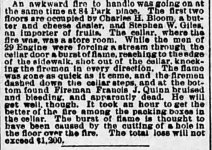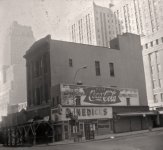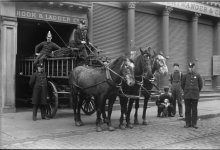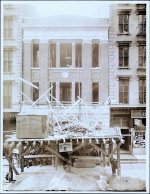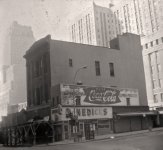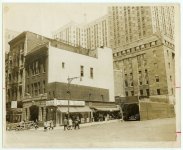160 Chambers Street former FDNY firehouse
Built 1897
ENGINE 29 MANHATTAN
ORG. 304 Washington St. FQ Vol. (Oct. 20, 1865)
NQTRS. 193 Fulton St. W/ L-10 (Aug. 30, 1866)
RELOC. 174 Fulton St. W/ L-10 (Dec. 1, 1875)
RQTRS. 193 Fulton St. W/ L-10 (May 1, 1876)
RELOC. 35-37 Vesey St. W/ L-10 (Aug. 7, 1878)
RQTRS. 193 Fulton St. W/ L-10 (Oct. 15, 1878)
NQTRS. 160 Chambers St. (Mar. 29, 1897)
DISB. (Jan. 1, 1947)
BATTALION 1 MANHATTAN )
RELOC. 160 Chambers St. At E-29 (Oct. 15, 1912)
RELOC. 191 Fulton St. At L-10 (Jan. 1, 1915)
1897 Chambers St Fire - LODD
The members of Engine Company No. 29 had barely moved in when they were called to a fatal fire almost directly across Chambers Street. On the night of May 6, 1897 the five-story cold storage warehouse at Nos. 161 and 163 Chambers Street caught fire. At around 8:00 pm Policeman Herle noticed smoke escaping from the basement area and notified the firehouse. Within seconds six of the firefighters were on the scene only to be driven back by suffocating smoke that belched from the windows they broke open.
The basement area was used to store paper, twine and cardboard and the materials burned like kindling. Quickly a second, then third alarm was sounded, resulting in a dozen engines pumping water into the cellar.
Because the building was a cold storage facility, there were few windows and the solid walls were heavily timbered. The firemen battled with heavy axes for more than an hour attempting to break in. When an opening was finally created, six firefighters including Captain Kenny of Engine 7 descended eight feet down into the cellar with a line of hose. A wall of smoke and deadly gas—possibly ammonia--sent them reeling back.
But one fireman, John G. Reinhardt of Engine Company 7, had fallen unconscious in the thick smoke. The others tried vainly to rescue him until they too were in need of rescue. When pulled through the sidewalk opening, they men were unable to breathe or speak.
The firefighters from Engine Company 29 joined in the attempts to rescue Fireman Reinhardt. Dozens of firefighters had to be pulled back from the toxic, smoke filled cellar, delirious from the effects of the gas.
“The smoke had a curious effect on them,” reported
The New York Times. “Unconscious of their surroundings, the gallant fellows cursed and swore and kicked and struggled until in many cases it took six policemen to carry one of them to the waiting ambulances.”
The newspaper praised the gallantry of the firefighters. “Even after knowledge of the deadly character of the smoke bore in on them, by the number of men they had seen carried away unconscious from the vicinity of the small entranceway, belching out its deadly fumes, must have convinced them that their companion could not be living, they pressed forward, insisting on their right to do for him what they knew, if living, he would have done for any one of them.”
Engine Company 29 became a triage center.
The Sun reported that “The quarters of Engine Company 29, in Chambers street, bore a close resemblance to a surgeon’s tent in the field…Straw which had been intended for bedding for the horses was dragged out on the floor and pallets were made of it for the men to lie on.” The newspaper recounted that Fireman Joseph McCormick, of Engine Company 29, was the first brought in. “He was delirious and struggled furiously with his rescuers.”
Next came Timothy Donovan, Edward O’Connor and Steve Sullivan; all of them members of the station house. “Fireman Devins was next brought in, and then others followed in such quick succession that for about fifteen minutes the engine house floor was covered with groaning men.”
In the end, of course, the 35-year old firefighter was dead. He had been married a few weeks earlier on Easter Sunday. Among the twenty-one firemen taken to the Hudson Street Hospital was Engine Company 29 member Steven Sullivan.
Engine 29
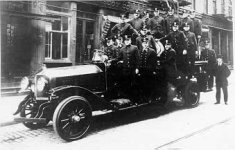
Engine 29 FDNY Medals
THOMAS J. MC ARTHUR FF. ENG. 29 OCT. 29, 1900 1902 JAMES GORDON BENNETT
JOHN F. DEVANNY CAPT. ENG. 29 1900 1902 STEPHENSON
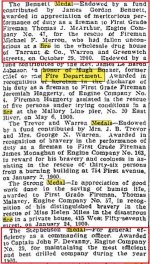 Engine 29 LODDs
Engine 29 LODDs
| FIREFIGHTER | JOSEPH WILLIAMS | ENGINE 29 | NOVEMBER 1, 1877 |
| FIREFIGHTER | JOHN W. IRVING | ENGINE 29 | JANUARY 7, 1879 |
| FIREFIGHTER | THOMAS DUNLEAVY | ENGINE 29 | AUGUST 25, 1885 |
| FIREFIGHTER | FRANCIS J. QUINN | ENGINE 29 | FEBRUARY 1, 1887 |
FF Joseph Williams
Fireman Joseph Williams returned to quarters from a leave of absence, which he had overstayed by 48 minutes. Fireman James Donovan who was on house patrol, made the entry in the Journal in accordance with the above facts. This so irritated Williams that they had words and from words came blows. During the fracas Williams was severely cut in two places on the left arm. At the time of the occurrence Donovan had a knife in his hand cleaning a pipe, and he claims that Williams was cut by striking down on the knife. Williams went to the 27th Precinct Station House and was removed to Chambers Street Hospital by ambulance in an exhausted condition from the loss of blood. Several days later, he died. (From "The Last Alarm" by Boucher, Urbanowicz & Melahn. 2007)
FF John W Irving
FF Irving died in the line of duty
FF Thomas Dunleavy
About six minutes after the arrival of the first-alarm companies, a violent explosion of expansive gas generated by combustion occurred in the interior of the building [at 78 to 82 Barclay Street, Manhattan.] The roof was raised on the Barclay Street front side and threw the cornice of about six courses of bricks into the street. The debris struck and injured nine firemen. Fireman Thomas Dunleavy of Engine 29 received a compound fracture of the bone of the right thigh. He was taken to Chambers Street Hospital. His leg was amputated on August 24 and he died from shock and exhaustion the next day. (From "The Last Alarm" by Boucher, Urbanowicz & Melahn. 2007)
FF Francis J Quinn
Fireman Francis J. Quinn was operating with the rest of his crew in front of the building [at 57 Barclay Street on January 22, 1887]. Suddenly he was overcome by smoke and heat and fell over into the cellar where the fire had originated. He was rescued but was suffering the following injuries, internal injuries from inhaling the heat and severe contusions of the head, from the effects of which he died. (From "The Last Alarm" by Boucher, Urbanowicz & Melahn. 2007)
Firehouse 1940s
 Current
Current

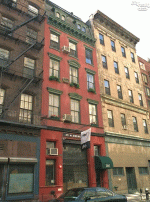
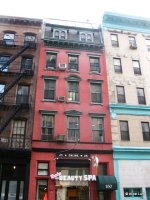
Posts about Engine 29 Chambers Street written by ephemeralnewyork

ephemeralnewyork.wordpress.com

Engine Company No. 29 -- 160 Chambers Street
photo by Alice Lum By 1894 the Chambers Street Hospital at 160 Chambers Street was outdated, unclean and crowded. The building had bee...

daytoninmanhattan.blogspot.com
